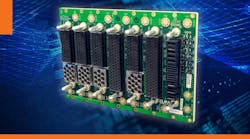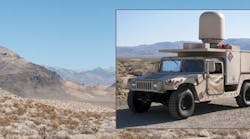Radar has been a defensive electronic weapon for some time, usually served by large, heavy systems, although the technology is being fit into smaller and lighter packages. Radar transmitters once relied on large vacuum tubes along with their associated full-sized power supplies to power their pulses. The large sizes and weights of these components limited the portability of radar systems in the battlefield.
However, the tide is steadily changing with increased use of solid-state semiconductor technologies such as gallium-nitride (GaN) transistors on silicon (Si) and silicon-carbide (SiC) substrates. As solid-state device technologies gain in power and frequency, high radar output power can be reached with much smaller devices and system packages, making true portability possible. The same radar system that provides a warning from a distance can sit alongside the troops.
One of the larger and “more visible” of these portable radar systems is the AN/TPS-78, a transistorized S-band air-surveillance radar system from Northrop Grumman. The Air Force uses the Doppler radar system for long-range detection, even with the system’s capabilities of rapid assembly and disassembly. It can detect high- and low-altitude targets even when they are surrounded by heavy ground clutter and sea clutter.
By operating at S-band frequencies, the system can work with smaller antennas and electronics than at lower frequencies (longer wavelengths). Along with the antenna, transmit electronics, and receive electronics, the full system can be housed in a compact ISO shelter that’s then transported in a single C-130 aircraft or helicopter and deployed in less than 30 min. It can also be deployed by means of a single all-wheel-drive vehicle (Fig. 1).
1. The AN/TPS-78 is a transistorized, transportable S-band air-surveillance radar system that uses Doppler processing for long-range detection. (Courtesy of Northrop-Grumman)










